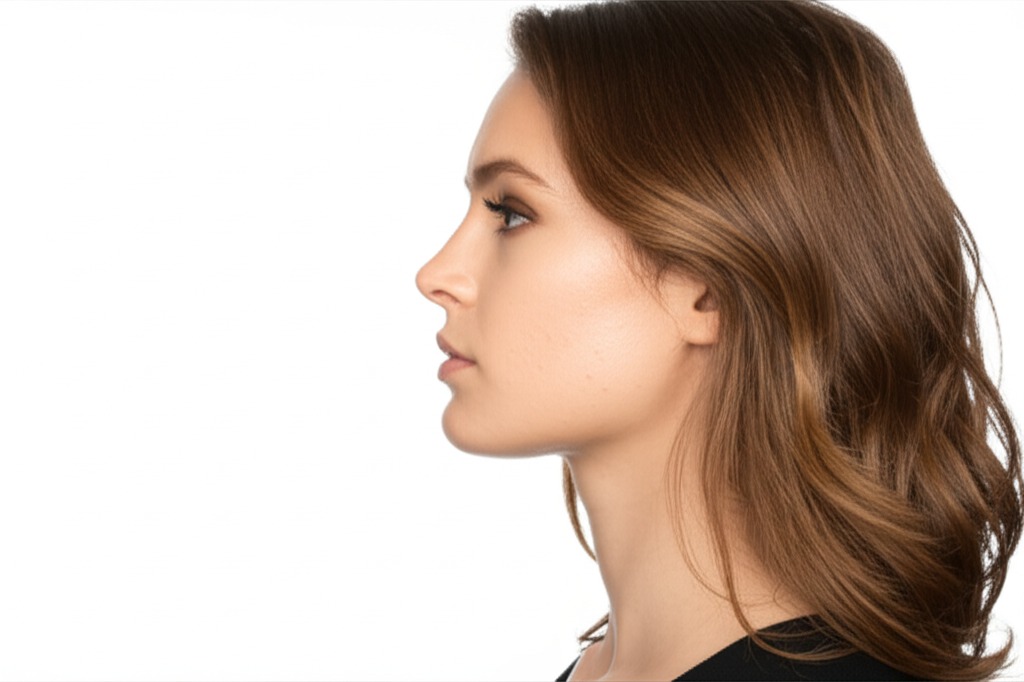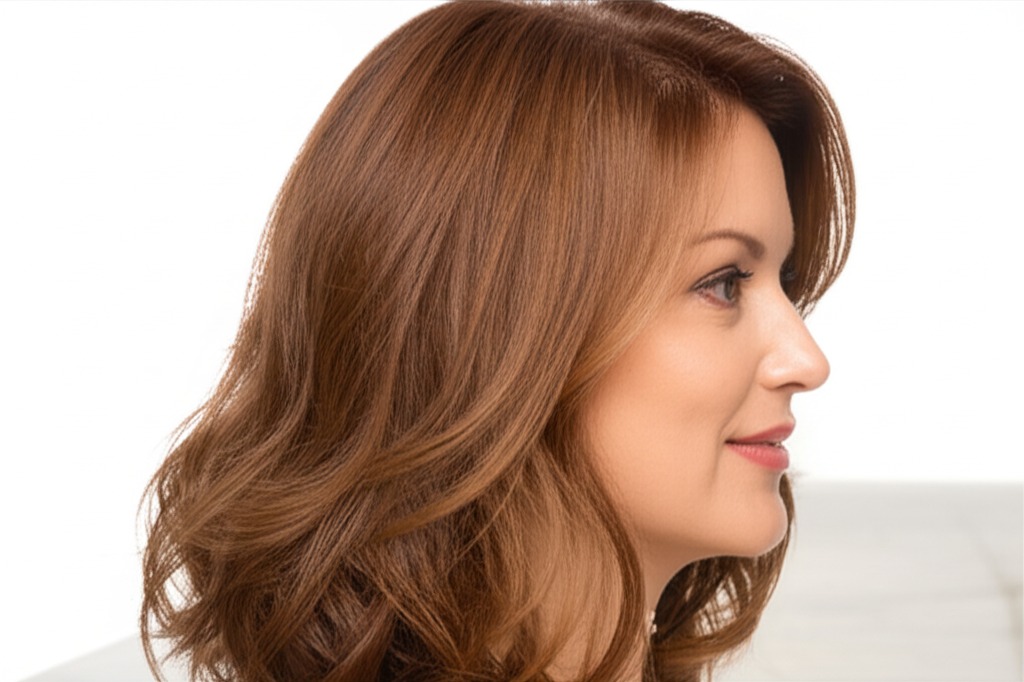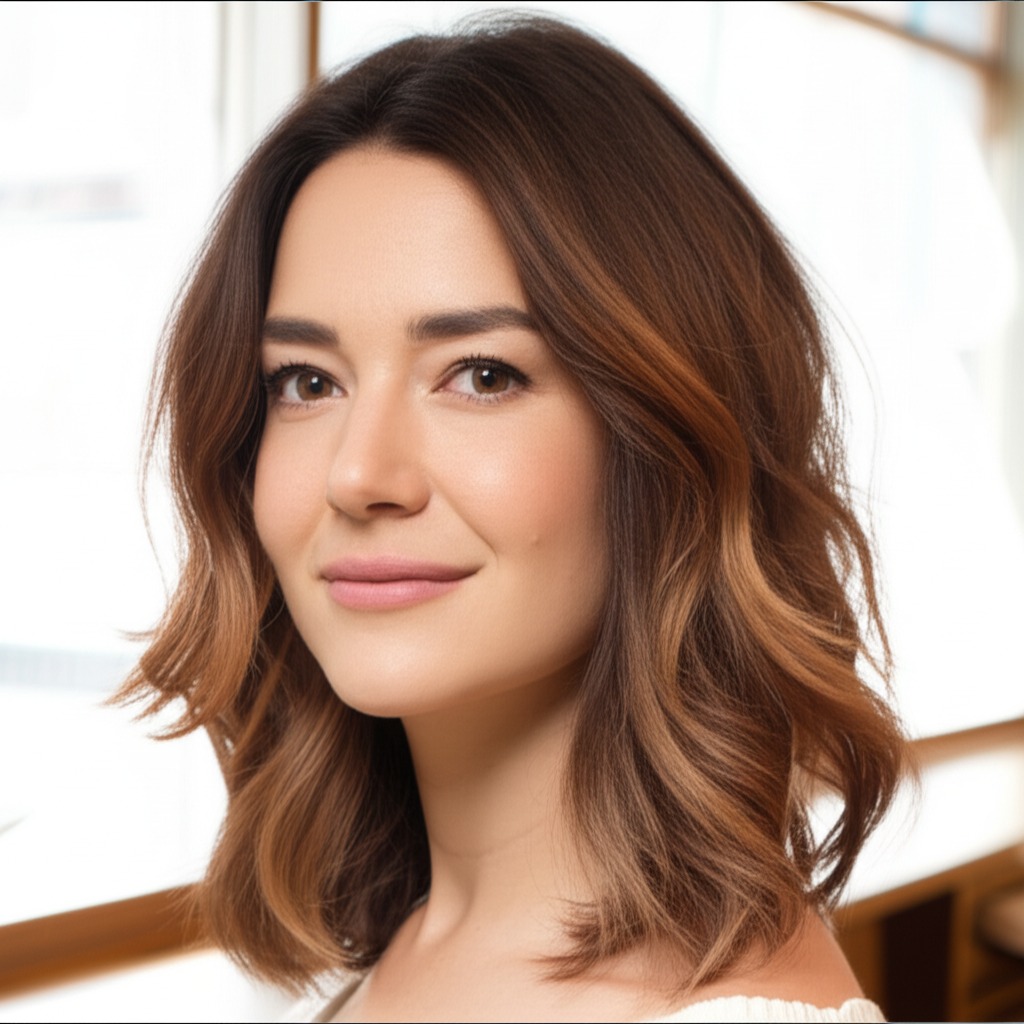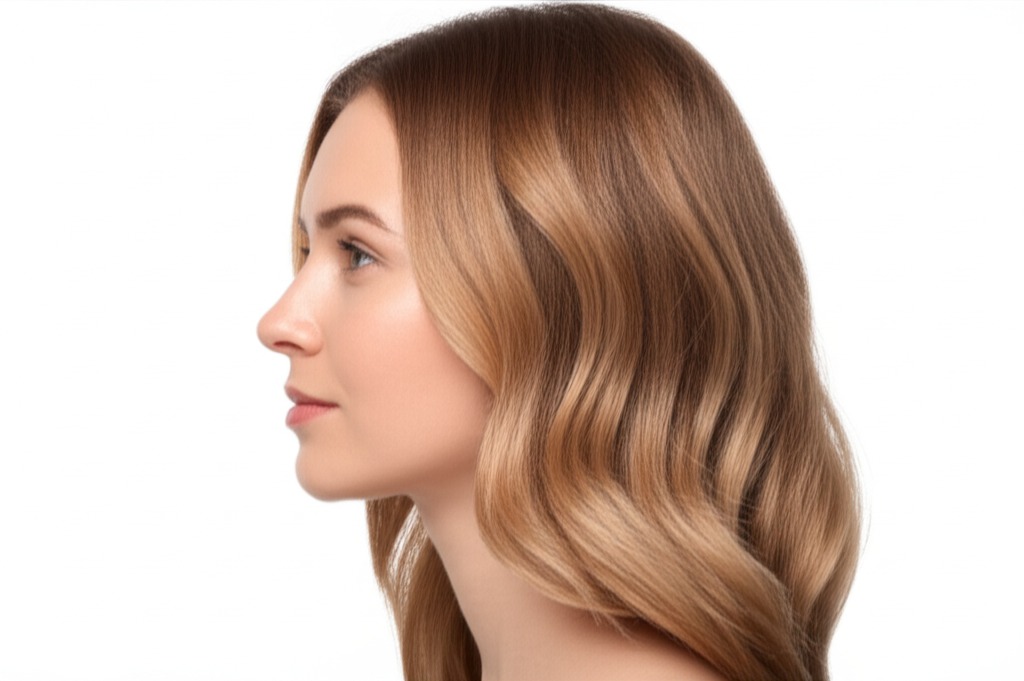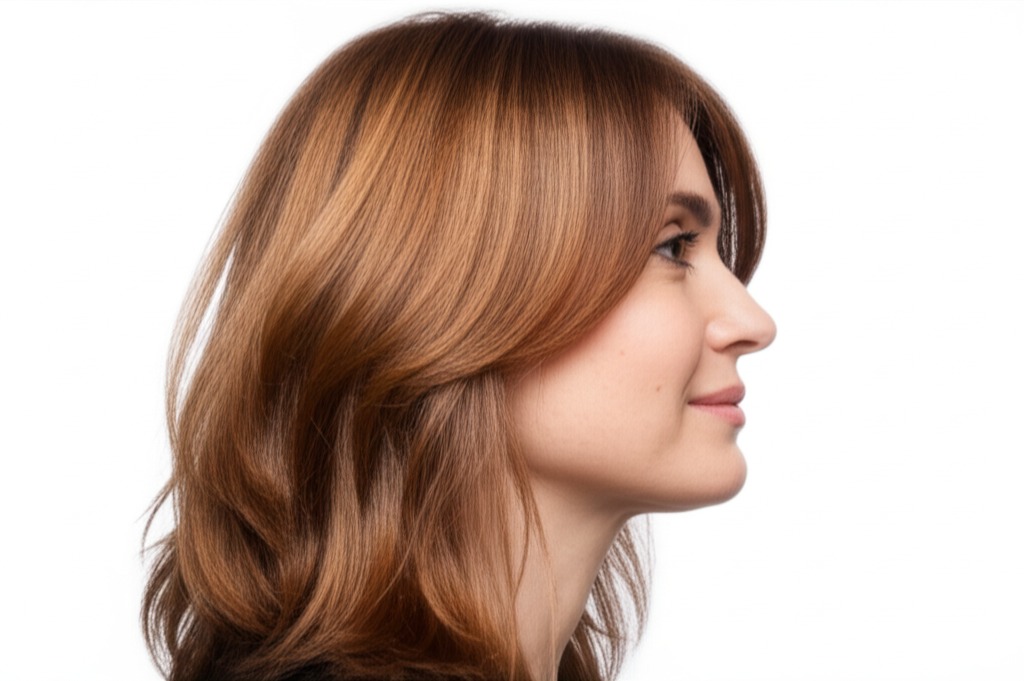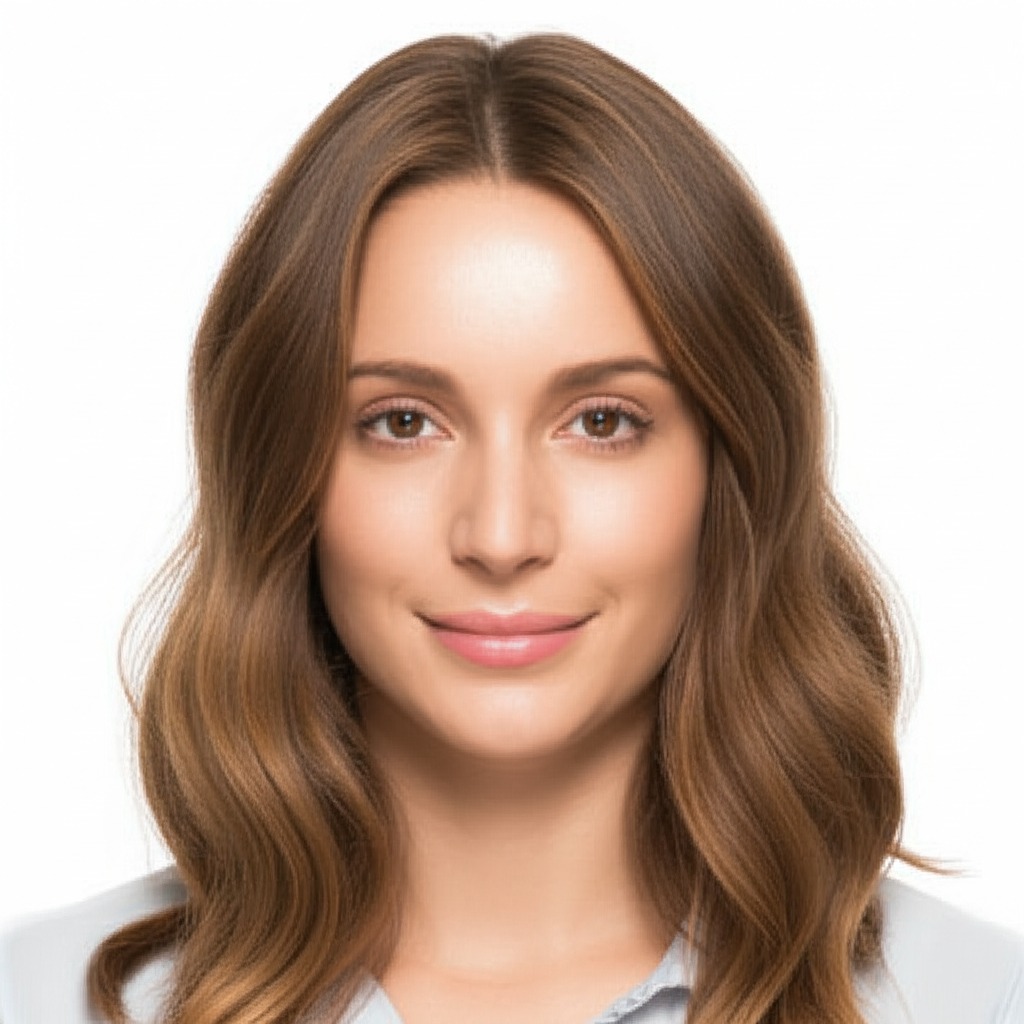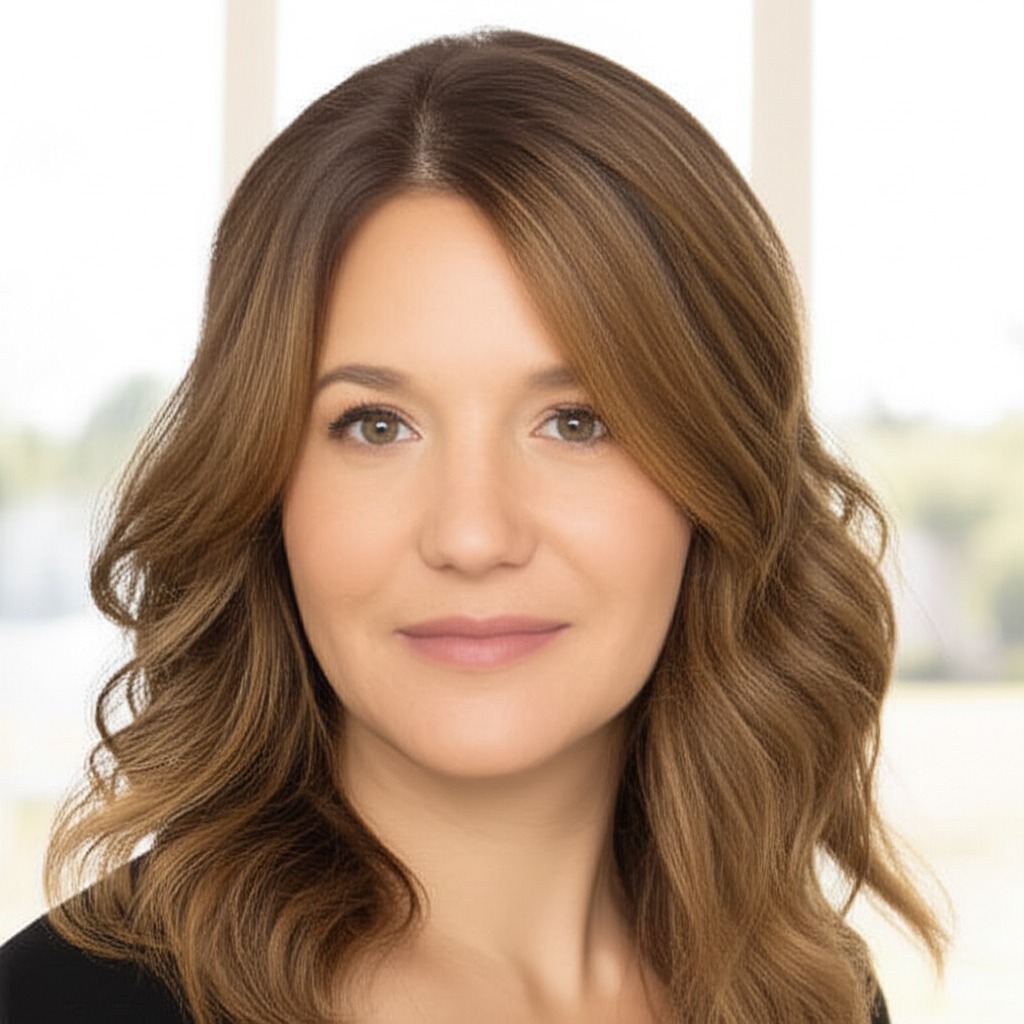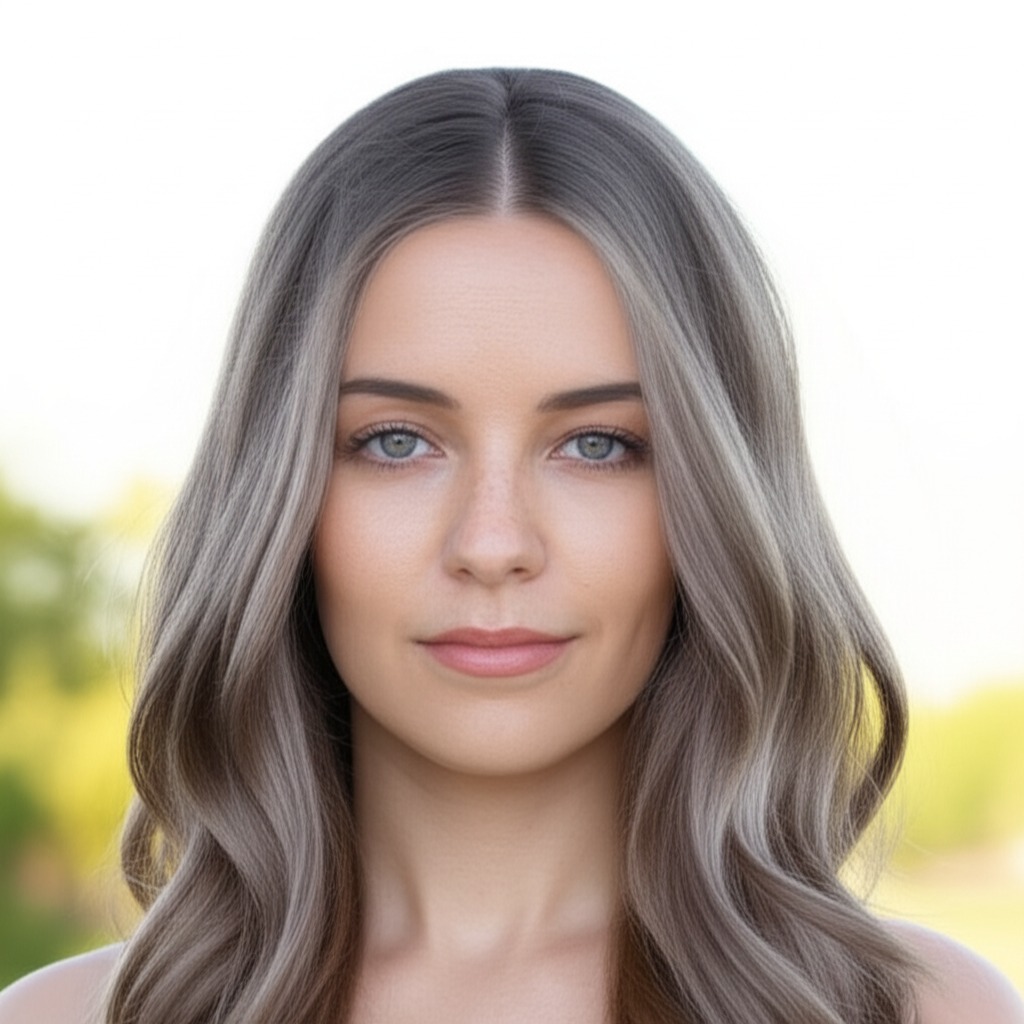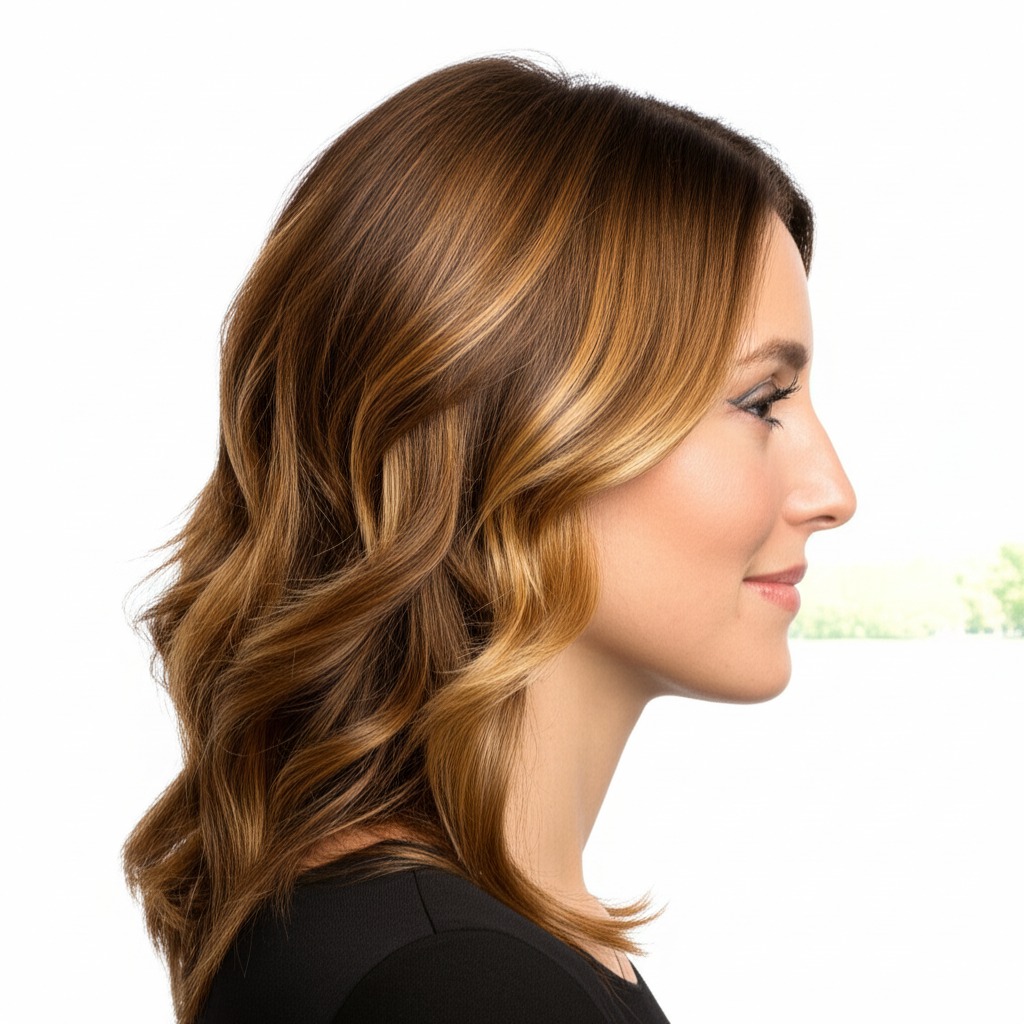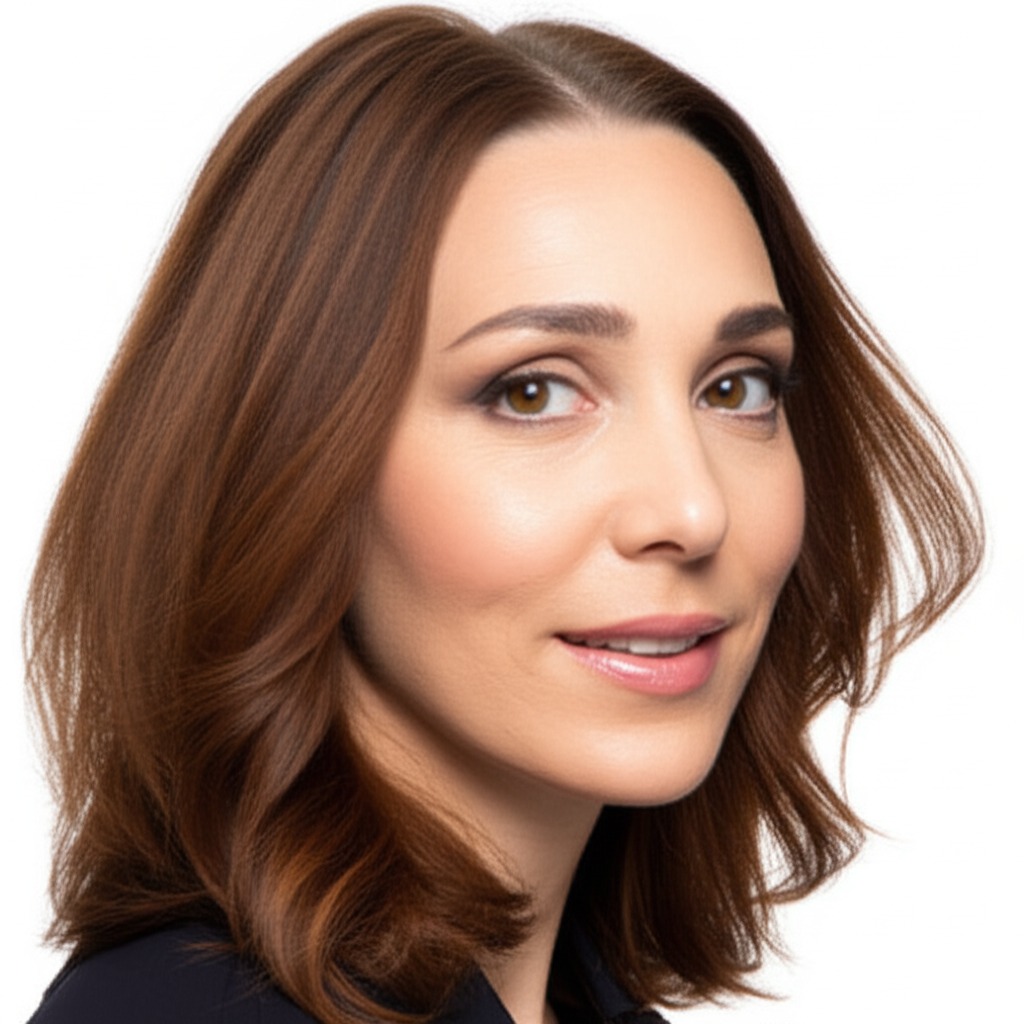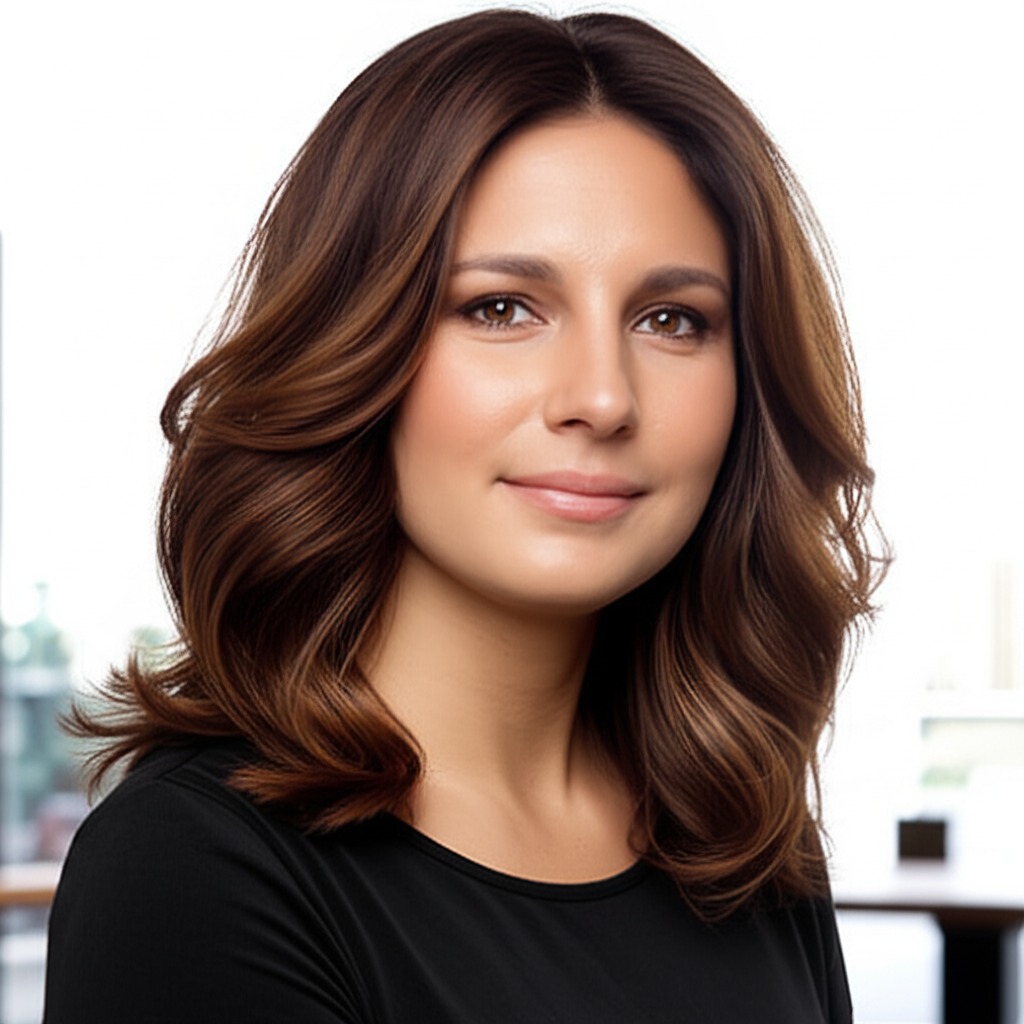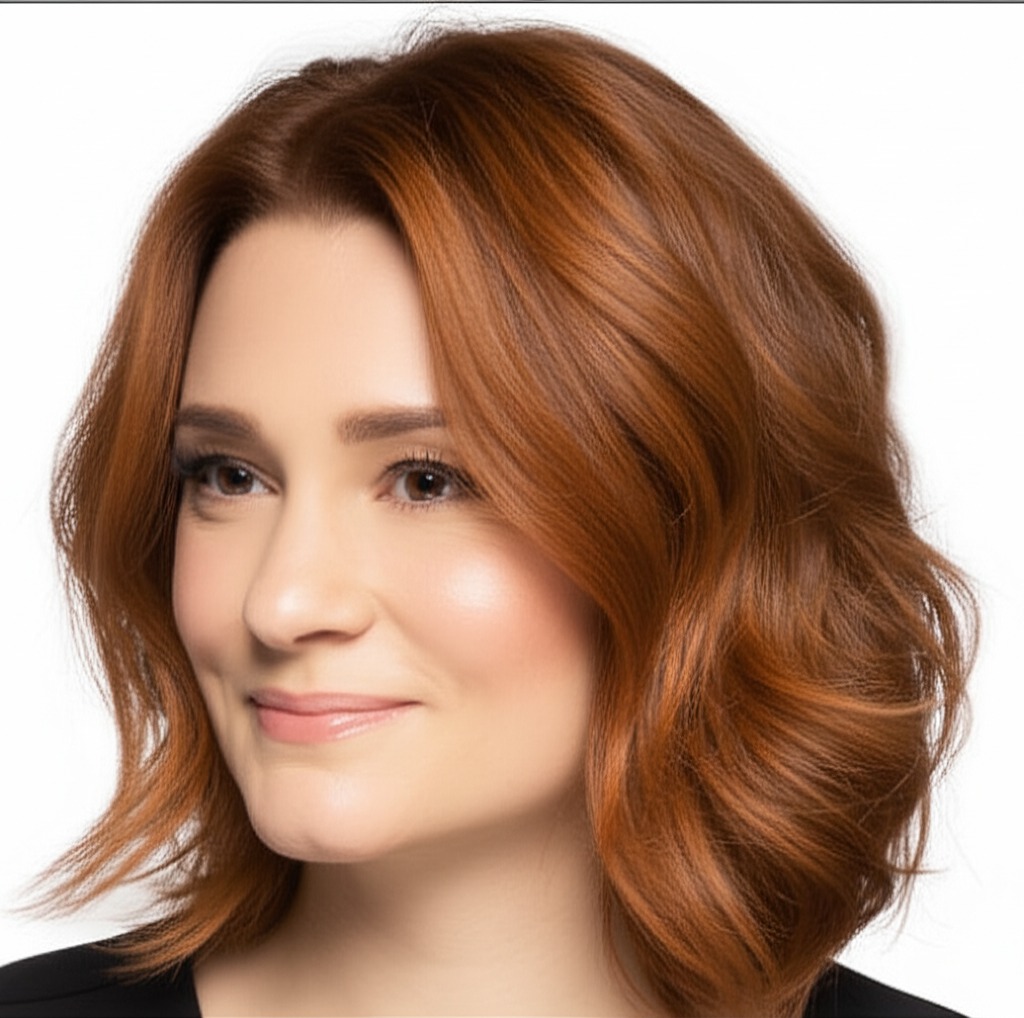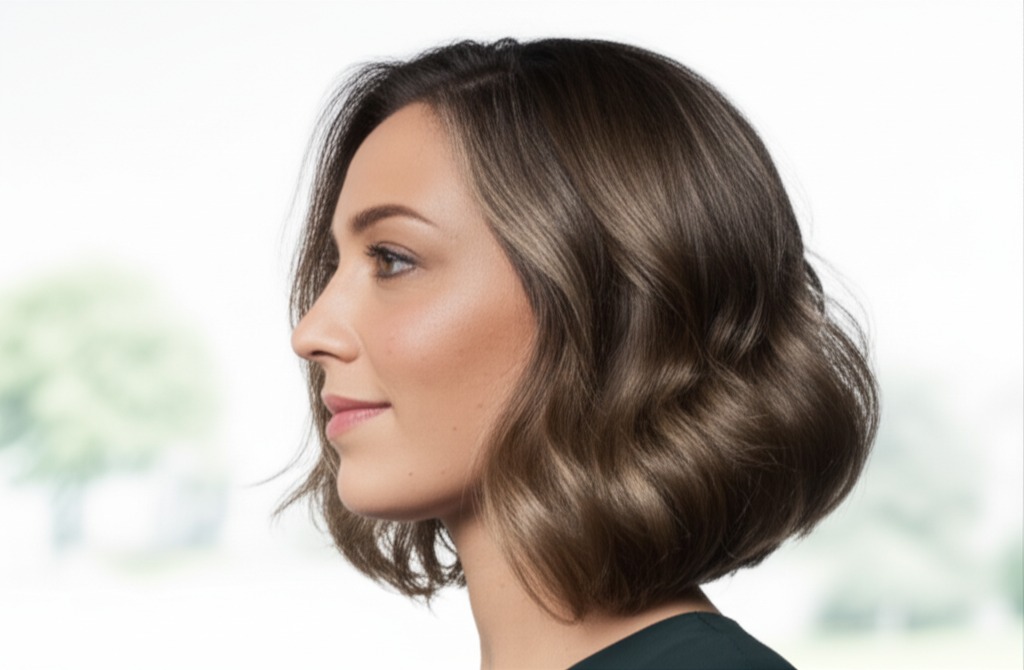#Embrace the Warmth: A Guide to Maple Brown Hair Color
Maple brown is a universally flattering hair color that evokes cozy autumn vibes – think fallen leaves and warm evenings. It’s more than just "brown"; it's a nuanced shade with incredible depth and richness. This guide will break down everything you need to know about achieving and maintaining this gorgeous hue, no matter your starting point or lifestyle.
#1. Defining Maple Brown: Undertones & Depth
Maple brown isn’t one single color – it’s a family! The key lies in understanding its undertones and depth.
- Undertone: Most maple browns lean warm. This means they have hints of red, orange, or gold within the brown base. However, you can find variations that are more neutral (balanced with cooler tones) to suit different skin complexions. A truly "cool" maple brown is rare and often leans towards a mocha shade rather than a traditional maple hue.
- Depth (Levels): Hair color levels range from 1 (blackest black) to 10 (lightest blonde). Maple browns typically fall between Levels 3-6, depending on how light or dark you want the overall effect. A Level 3 would be a richer, darker maple brown; a Level 6 would have more lightness and brightness. The difference of even one level can dramatically change the final look!
#2. Who Does Maple Brown Flatter?
Maple brown’s warmth is generally flattering but works best with certain features:
- Skin Tone & Undertone:
- Warm Skin Tones (yellow or golden undertones): This is where maple brown really shines. It enhances the natural warmth and glow of your skin. Think olive, tan, or honey-toned complexions.
- Neutral Skin Tones: Maple brown can work beautifully on neutral skin tones as well! Look for a more balanced, less intensely warm maple shade to avoid overwhelming your complexion.
- Cool Skin Tones (pink or blue undertones): While trickier, it is possible! Choose a maple brown with cooler undertones – think hints of mocha or even a touch of plum – and ensure the level isn't too dark as that can create contrast that washes you out.
- Eye Colors: Maple brown complements almost all eye colors:
- Brown Eyes: Maple browns deepen and enhance the richness of brown eyes, making them appear more luminous.
- Blue/Green Eyes: The warmth of maple brown creates a beautiful contrast with cooler eye colors, bringing out their vibrancy.
- Hazel Eyes: Maple brown highlights the different flecks of color within hazel eyes.
- Natural Starting Level: Maple brown is adaptable!
- Darker Hair (Levels 3-5): A single process or subtle balayage can achieve a beautiful maple transformation.
- Lighter Hair (Levels 6-8): You might need to tone down existing highlights/lowlights and add depth with a gloss or toner.
#3. Technique Options: From Subtle to Statement
The right technique is crucial for achieving your desired maple brown look.
- Single Process: This involves applying color evenly from root to tip. Great for covering grays or creating a solid, uniform color change.
- Highlights/Lowlights: Adding highlights (lighter pieces) and lowlights (darker pieces) creates dimension and movement. Caramel or copper highlights complement maple brown beautifully.
- Babylights: Very fine, delicate highlights that mimic the natural sun-kissed look of a child’s hair. Adds subtle brightness without harsh lines.
- Gloss/Toner: A semi-permanent color applied over existing color to adjust tone and add shine. Perfect for tweaking your maple brown – adding warmth or neutralizing brassiness.
- Balayage-Effect vs Solid: Balayage (hand-painted highlights) creates a softer, more natural look with blended roots. A solid application provides even coverage but can appear less dimensional.
#4. Maintenance & Longevity: Planning for the Long Haul
Maple brown requires commitment and planning!
- Wash Frequency: Aim to wash your hair 2-3 times per week using color-safe shampoo (more on that later).
- Toner Refresh: Warm tones fade quickly, so plan for a toner refresh every 6-8 weeks. Your stylist can advise you on the best frequency based on your hair's condition and how much fading you notice.
- Root Growth Pacing: Discuss with your stylist whether to maintain a more blended look or allow roots to grow out slightly for a lower-maintenance style.
- Budget/Time Planning: Maple brown, especially with highlights or balayage, is generally considered a medium investment. Expect salon visits every 6-12 weeks and potential at-home touch-ups.
#5. Seasonality & Pairing With Cuts: Adapting Your Look
Maple brown's warmth makes it incredibly versatile throughout the year!
- Bob/Lob: A sleek bob or lob looks stunning with a rich, dark maple brown – think sophisticated and chic.
- Long Layers: Long layers enhance the dimensional effect of maple brown highlights, creating movement and flow.
- Pixie Cut: A pixie cut can rock a vibrant maple brown for a playful and edgy look.
- Seasonal Tweaks:
- Fall/Winter: Embrace darker, richer maple browns with cool undertones to complement the cozy season.
- Spring/Summer: Lighter, brighter maple browns with golden highlights evoke sunshine and warmth.
- Event/Occasion Picks:
- Work: A more muted, neutral maple brown is professional and polished.
- Daytime: A lighter, sun-kissed maple brown feels fresh and approachable.
- Evening: Richer, deeper maples with copper or caramel highlights create a glamorous look.
- Weddings: Consider a softer balayage effect for a romantic and effortless vibe.
#6. At-Home Care: Protecting Your Investment
Proper at-home care is key to preserving your maple brown color.
- Sulfate-Free Shampoo: Sulfates strip hair of its natural oils and fade color quickly. Opt for sulfate-free formulas specifically designed for colored hair.
- Clarifying Cadence: While sulfates are a no-no, occasional clarifying shampoos (every 4-6 weeks) can remove buildup from products and minerals in water.
- Heat Protection: Always use a heat protectant spray before using any hot styling tools (blow dryer, straightener, curling iron).
- Color-Safe Styling Tips: Avoid harsh chemicals like bleach or perming agents at home.
- Product Checklist: Color-safe shampoo & conditioner, leave-in conditioner, heat protectant, hair mask (for hydration and color vibrancy).
#7. Common Pitfalls: Prevention is Key!
- Brassiness: Warm tones can oxidize and turn brassy over time. Use a purple shampoo or toner to neutralize yellow/orange undertones.
- Banding: Uneven color application, often due to overlapping product during highlights or single process coloring. Proper technique by your stylist is crucial.
- Patchiness: This happens when the color isn’t applied evenly, resulting in noticeable spots of different shades. Always choose a skilled and experienced colorist!
#8. Pros & Cons: Weighing Your Options
Pros:
- Universally Flattering: Works well with many skin tones and eye colors.
- Versatile: Can be adapted to various styles and seasonal trends.
- Warm & Cozy Aesthetic: Evokes a sense of comfort and style.
Cons:
- Maintenance Burden: Requires regular salon visits for toner refreshes.
- Fade Risk: Warm tones tend to fade faster than cooler shades.
- Potential Brassiness: Requires proactive measures to prevent brassiness.
#9. Salon Consultation Script: Setting Expectations
Here are some prompts your stylist might use (and you can bring up yourself!):
- "What is your current hair color and level?"
- "What are your goals for this color change? What look are you hoping to achieve?"
- "Do you have any photos of maple brown shades that inspire you?"
- “How important is low maintenance versus a more vibrant, frequently refreshed result?”
- "Are there any areas of concern (e.g., gray coverage, brassiness) we need to address?"
- "What's your typical hair care routine and what products do you use?"
#10. FAQs: Your Maple Brown Questions Answered
- Can I achieve maple brown on black box-dyed hair? It’s possible but requires significant processing and may result in damage. A consultation is essential to assess the feasibility and potential risks.
- How long will it take to get maple brown? A single process can take 1-3 hours. Highlights/balayage can take up to 4+ hours, depending on complexity.
- Does maple brown work well with gray hair? Yes! A blended approach using highlights and lowlights can beautifully incorporate gray hairs while achieving a natural maple brown look.
- What’s the difference between purple shampoo and toner? Purple shampoo helps prevent brassiness, while toner actively neutralizes it and adjusts the overall tone of your hair.
- Can I do this at home? While possible for minor adjustments (toner refresh), achieving a significant color change or intricate techniques is best left to professionals.
- Will maple brown damage my hair? Any chemical process can cause some degree of dryness or damage. Proper care and conditioning are essential, especially with lighter levels of maple brown.
With careful planning, the right technique, and consistent at-home care, you can embrace the warmth and beauty of maple brown hair!
